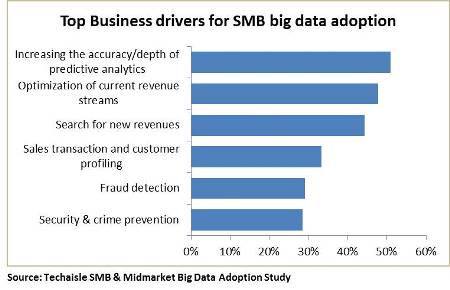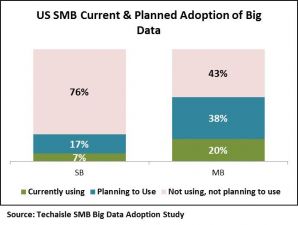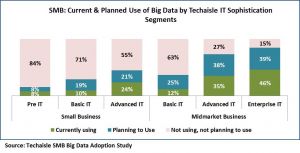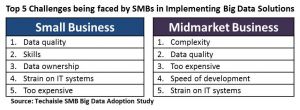Hortonworks is a 100 percent open source company, in direct contrast to Cloudera, and every presentation and conversation during its first ever analyst day reinforced its unwavering commitment to open source. In a very short period of time it has come a long way as a software product company with a vision “to manage the world’s data” – data-at-rest, data-in-motion, modern data applications. It wants to enable next generation data architecture by innovating the core, to be used for any delivery model and for all data.
Hortonworks has made great strides in the last couple of years – has 800+ subscription customers and plans to add 100-150 customers per quarter; has 1600 partners which it is trying to educate, mentor and support; its community connection has 3000+ members with 11,000+ weekly visitors; and is a founding member of ODPi (open ecosystem of big data).
The trio – Cloudera, Hortonworks, MapR - are in premium because they are the pioneers in the space and businesses engage with them because of their technology leadership. But short-term advantages do not count any more. By being a public company Hortonworks has declared longevity and it can no longer be judged by having a first-mover advantage. At this stage of the company it is important to design a go-to-market business model architecture that meets the demands of modern businesses. Although Hortonworks heart and comfort zone is in technology product road map it is pivoting very well to “strike conversations with business executives” to deliver the business perspectives that they need.
Hortonwoks has grand plans for technological leadership which it hopes will increase its market share, and divert most big data purchase conversation to its transparent open source subscription model. However, it will be a long, tedious and arduous effort. Hortonworks has both awareness and reach issues. A large percentage of the midmarket and lower-enterprise businesses as well as partners that Techaisle interacts with begin their big data solution selection process with either large IT vendors or smaller consulting organizations. In Techaisle’s most recent US midmarket big data & analytics adoption survey, although 30 percent of businesses are currently either piloting or implementing a big data project and another 50 percent are planning to deploy, neither Hortonworks (nor Cloudera) are top of mind big data suppliers. The top of mind suppliers are IBM, HP, Microsoft, Dell, Oracle and Accenture – in that order. A typical door-to-door selling motion of Hortonworks may not help when the share of installed base and partner ecosystem is lower than its most dominant competitor. In its defense Hortonworks quickly points out that it has no competition because it is the only open-source company. It is certainly a difficult task and Hortonworks is building its partner program to alleviate and augment reach and sales.
The average spending on big data by midmarket customers is growing. As per Techaisle’s big data adoption trends study of last two years, the average spending has jumped from US$28,900 to US$56,600, a 96 percent increase. 53 percent of midmarket big data adopters are exploring Hadoop ecosystem including analytical database and less than 1/5th are working with NoSQL databases.
One of the top gripes of the midmarket and lower-enterprise businesses is that the sales personnel of big data companies “talk about features and who has more committers”. Instead these businesses want to know & learn how their offerings solve customer problems. To this Hortonworks has a perfect and differentiated response. It has developed a cheat sheet with two different tracks (Hortonworks calls them swim lanes) – one focused on customers that are at the cutting-edge of big data adoption and analytics and the other that are just beginning their journey and are focused on transforming their data into analytics projects. And to Hortonworks credit it has generated several powerful case studies for most business problem scenarios. These scenarios are clearly outlined in the “swim lanes” cheat sheet in a bee-hive like matrix which is easy to understand, manage and translate. This is definitely a step in the right direction for sales conversations.
There is no doubt about Hortonworks technical capability. At the analyst event Hortonworks launched its connected data platform that connects data-at-rest to data-in-motion - powered by Apache NiFi, the connected data platform acts as the bridge between Hortonworks Data Platform and Hortonworks Data Flow. It fast tracks getting data into Hadoop.
Spark is the new reality and Hortonworks understands the dynamics and the pressures. Hortonworks plans to bring enterprise Spark at scale and is rolling out Apache Spark 1.6 with faster Spark streaming, dataset APIs and automatic memory tuning. Its new Apache Ambari 2.2 provides a single pane of glass for all core services, enables express upgrades to update clusters and has new integrated SmartSense technology with nearly 250 recommendations to optimize cluster performance & availability.
But challenges are plenty. Viability of open source ecosystem is based on top talent working on hard problems and the talent is migrating to Spark rather than Hadoop. Given this vulnerability Hortonworks must find ways to remain on their good side. To address the potential issues, it has begun to curate, nurture and employ committers. But Hortonworks biggest challenge will be to show thought leadership that answers questions on the direction of open source and the dynamics of open source business model.
Hadoop is still an alien term within the business (as opposed to IT) world. It has a Unix problem. Unix was the next best thing in 1990s but developers and users did not have expertise to make it mainstream. It took Unix 9-10 years to establish itself, helped generously by education from HP, IBM, and Sun. In the same vein Hortonworks has three critical challenges – 1/ sales must educate and motivate business users to embrace Hadoop keeping Hortonworks brand front-and-center, 2/ marketing must explain its ecosystem dynamics to the end-customer, 3/ devops is at the core of an enterprise development, Hortonworks must provide thought leadership in this area.
Kudos to Hortonworks for creating a visible roadmap architecture consisting of open source components - NiFi for data ingestion, Spark for transformation, Hive for queries and Zeppelin for dashboards - that when tied together can deliver end-to-end big data solutions. However, it is a palette of moving parts, which creates a decision inertia within the end-customers, as they have to understand all vulnerabilities, trade-offs and compatibility issues. When there is a closed system, all components can be managed, but in an open system the effort is dependent upon the participation and loyalty of the community and the larger ecosystem. So far, Hortonworks engineering group’s management of the dynamics of the developer community is great, in fact, creating and maintaining an ecosystem has been an enlightened philanthropy.
Hortonworks’ product evolution direction looks similar to Oracle from 20 years back – database, applications, middleware - and Hortonworks agrees. In modern ecosystem, Hortonworks success will be dependent upon how it is able to sell its projects to the community and have them contribute their free time. Just like VHS and Betamax, which gets adopted is dependent upon talent.
It is time for Hortonworks to over-play, over-announce and over-market its ecosystem dynamics. In the meantime businesses in the market for evaluating big data solutions must check out Hortonworks sandbox – an easy way to get started.



















